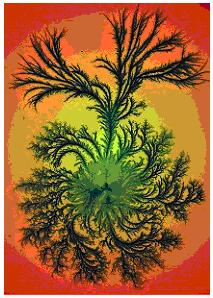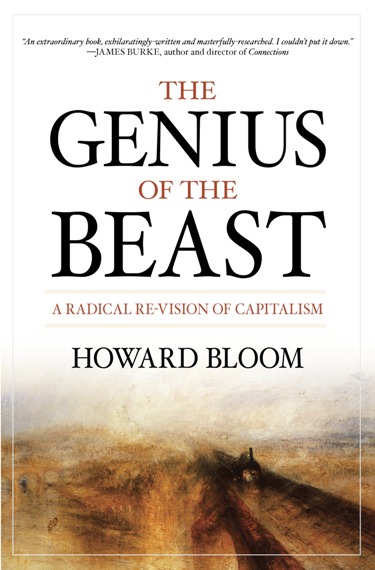Which have bigger brains, chimpanzees or baboons? If you guessed chimps, you’re right. Chimpanzees are our closest relatives on the planet. They share between 98.6% and 99% of our genes, depending on who’s counting. They are way up there in animal brainpower. An average chimp’s brain is more than twice as large as the brain of a baboon.
Now for question number two. Which are smarter, chimpanzees or baboons? The answer is … baboons. But how could that be? Chimps are brainier. Shouldn’t they also be, well, umm, brainier? Brighter by far? If baboons are winners on IQ measures, doesn’t that mean that intelligence is not just a matter of brain matter?
The answer is yes, there’s more to intellect than the number of neurons in your skull. So what’s the extra ingredient you need to turn brains into smarts? The answer is a bit surprising. Nimble minds need more than just a lot of synapses between brain cells. They need the power of groups. They need a force that pulses from the web of connection between group members…from the sum that’s bigger than its parts. They need what Gerardo Beni calls “swarm intelligence,” what Tom Atlee and Robert D. Steele call “Collective Intelligence” and what I call “Group IQ.“

What in the world is Group IQ? For a hint, let’s look at the very first creatures to self-assemble on this planet. Let’s look at our oldest ancestors, the creatures who pioneered life on the early earth over 3.5 billion years ago, bacteria. A bacterial species that comes readily to mind is Eschericia coli. Eschericia coli is one of your most faithful companions. It lives in your gut and mine. It’s also a bacterial species microbiologists can’t keep their hands off of. It thrives in petri dishes and shows off its stuff in ways that are easy for a curious researcher with a good microscope to see. And, like baboons, E. coli are much, much smarter than most of us think.
E coli are sugar junkies. Their favorite food is glucose. But when times get tough and the foods they like the most are nowhere to be found, they’ve got genetic tools they use to reengineer their string of genes, their genome, and their metabolism so they can eat far less tasty stuff, milk sugar—lactose. However there’s a substance E. coli have seldom come across in their long history on this planet. It’s a chemical from the bark of poplars and willow trees. Its name is salicin.
We use salicin as a pain killer. It’s the key ingredient in aspirin — a drug we didn’t begin to crank out in mass quantities until 1897. So in the 1980s and 1990s, several researchers decided to throw E. coli a curve. They gave colonies of these creatures nothing but salicin to eat. Now this is a bit like asking you and me to invent a new way to grow our gut and to retool the metabolic machinery of our cells so we can digest aluminum foil, gobbling it up like carrot cake, using it as our favorite food.
Solving the salicin problem, the problem of turning salicin into an appetizer or an entrée, is a tough one. It involves a mutation, a big change, in your genome, a change that carries you forward a giant step but gets you essentially nowhere. Then it takes another big step with no payoff—rejiggering your genome in a way takes you backward—that makes you even LESS capable of eating and surviving than you were before. Only then can you take the big step forward in the reengineering of your gene-string that lets you eat salicin with ease. The odds against pulling off this big step forward, this big step back, and the final step forward again are huge. The odds against the trick are especially staggering if you think a bacterial colony is mindless and that it makes all of its changes using the genie-in-the-bottle of today’s mainstream evolutionary theory, Neo Darwinism. The Neo Darwinian magic mechanism for change and upgrade is random chance, random mutation. The odds of reengineering yourself to make salicin by random mutation alone—without a group brain-- are ten billion trillion to one. Why?
Because according to Neo Darwinian evolutionary theory, a big step backward like the one in the salicin two-step will kill your species off. Any bacteria who try it will be goners. They won’t live to reproduce and pass their new mutation on. So no way should a chain of mutations happen in which one step cripples something as basic as your ability to eat.
Yet E. coli can reliably pull off the trick of reengineering their genes so they can eat salicin. How in the name of heaven or hell do they do it? The answer comes from one of my partners in crime, Eshel Ben Jacob, head of the Israeli Society of Physicists, former head of the Physics department at the University of Tel Aviv, and a man whose close to 20 years of breakthrough research in microbiology have landed in the queen of the science journals, Nature, and on the cover of The Scientific American. Ben-Jacob is also kind enough to tolerate me.
A colony of bacteria the size of the palm of your hand is populated by more citizens than all the human beings who have ever lived. The number of bacteria in that colony can vary from one to seven trillion. Each one of these trillions of bacteria has its own equivalent of a brain. It has what Ben Jacob calls a computational engine.
That computational engine is its genome.
We'll dive further into the computational engines of bacteria in our next exciting episode!
Go on to Part II.





Comments